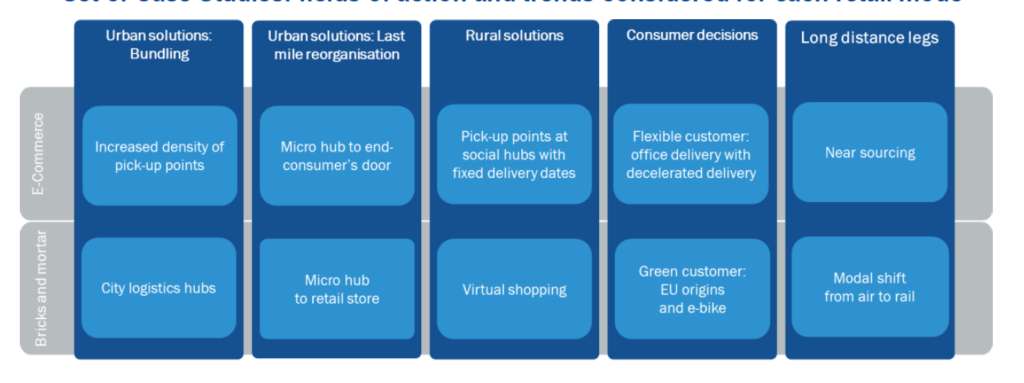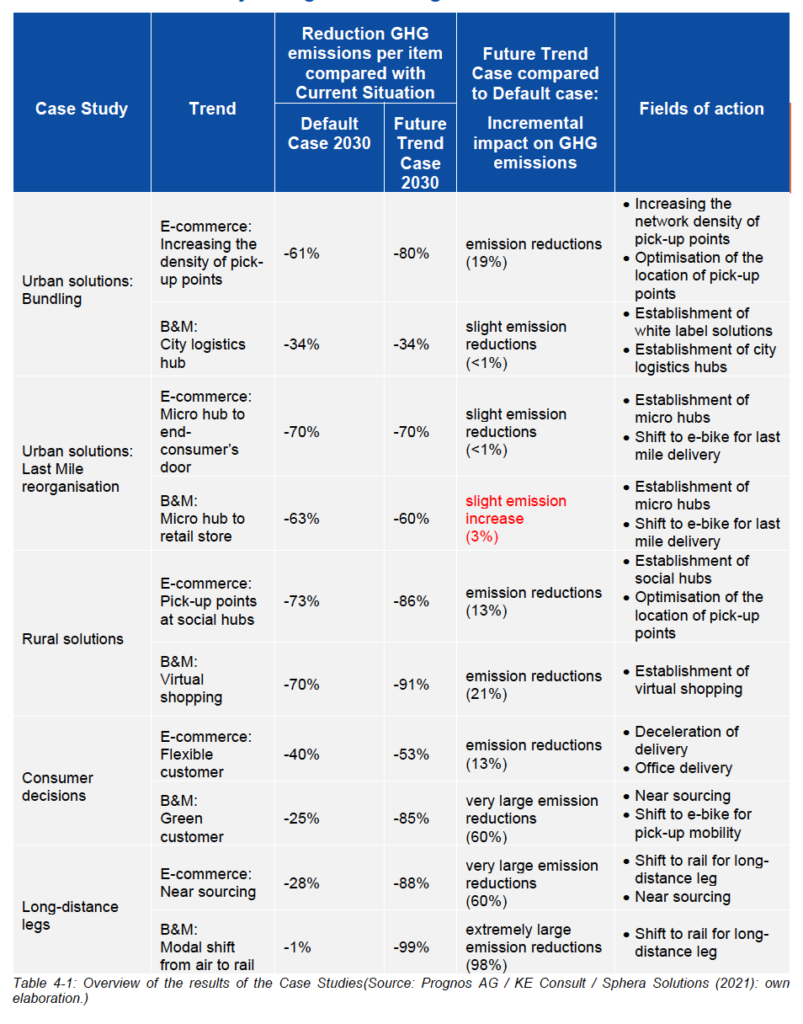Over the past decade, the share of e-commerce has risen. It is expected that this trend will continue. Bricks and mortar (B&M) retailers have reacted to the increasing share of e-commerce retail leading to an increasing merger of both retail modes into omnichannel retail. Changes in the transport system inevitably accompany these shifts in retail channels. Therefore, an EU study aimed to assess the environmental impact of e-commerce along the value chain compared with B&M retail.
Each single transport leg relevant to e-commerce or the B&M transport chain needed to be examined individually to assess the environmental impacts of both retail modes. Therefore, a transport chain analysis was carried out in the first step. In the second step, a modeling tool was established to calculate the environmental impact of each leg. In a third step, this modeling tool was used to calculate the environmental impact of real-life case studies.

The results of the case studies show a large bandwidth of reduction potentials of GHG emissions. Mitigation measures could be identified with various supporting measures. However, these measures can only address specific parts of the supply chain and are not open to all stakeholders. Therefore, a comprehensive effort is needed to bring all stakeholders together and combine measures suited to local circumstances.

Source: EU
